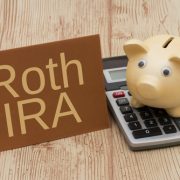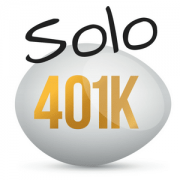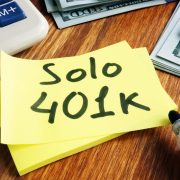Still Working into Retirement? Here’s how your Solo 401(K) Works
Case Study: George and Loretta, a married couple in their late 60s, have a small company they run together in Raleigh. They have plenty of income from pensions and do not expect to need the income from their Self-Directed Solo 401(K) for a long time, if ever. They preferred to let the assets compound until they pass them on to their children and grandchildren. To avoid RMDs, they began rolling over chunks of their Solo 401(K) to an IRA and then converting to a Self-Directed Roth IRA several years ago. They may sell their company to a competitor in their town, or to an interested family member and remain as employees, in order to continue to defer distributions and avoid RMDs.
Most of our Self-Directed IRA clients understand that they need to begin taking required minimum distributions (RMDs) from their Self-Directed IRAs and other tax-advantaged non-Roth retirement accounts by April 1 of the year after the year in which they turn age 70½ and take their next RMDs by December 31st of every year thereafter.
But more Americans are working well into their retirement years, and often because they want to. Advances in medical technology, lifestyle and nutrition have us living much longer than prior generations, and fewer of us are working in physically punishing professions that our ancestors worked, like coal mining, farming and construction.
For those of you working or planning to work well into your retirement years – and beyond age 70½, here’s how your RMDs from Self-Directed IRAs work:
If you have a qualified plan such as a 401(K) from your current employer, you may be able to continue to defer RMDs from that company’s plan. As long as that’s true, you have no required minimum distributions due until you actually separate from the service of that company or roll the assets into an IRA or Self-Directed IRA.
This provision only applies to employer plans like 401(K)s and 403(b)s, but not to IRAs. The IRS also does not allow you to apply this provision to Self-Directed SEP IRAs or Self-Directed SIMPLE IRAs.
So, what, precisely, does “still working” mean? Neither Congress nor the IRS has been entirely clear on this point. In theory, one could claim one is still working at a firm even if he or she is only working a single day out of the year.
But there is a trap here: It is easy for the unwary to say, “A-ha! I can form my own corporation, establish a Self-Directed Solo 401(K), load it up with assets, show up to “work” just an hour every year on New Year’s Day, and avoid taking RMDs indefinitely! I can let my retirement assets compound until the cows come home!”
But the cows would tell you that’s a bad mooooove.
Why? The IRS prohibits plan members still in the work force from deferring RMDs from their company’s plan if they own 5 percent or more of the business.
If you want to avoid RMDs entirely on your Self-Directed Solo 401(K), you have a couple of options:
You can establish a Roth 401(K) and contribute to that instead of a traditional tax-deferred Self-Directed Solo 401(K). But only your contributions are taxed under Roth rules – you still have the same issue with employer contributions, which would still be subject to RMDs.
The other option is to sell your company and continue to work there. As long as you do not retain more than a 5 percent ownership interest in the company, and as long as the plan’s documents allow for a still-working exemption, you can continue to defer taxes on it and you will not be required to take RMDs.
The other option to avoid being forced to take RMDs is to roll your 401(K) assets over to an IRA, and then convert it to a Self-Directed Roth IRA or Roth conventional IRA.
This move does involve a distribution – a large one, normally – which can push you into a higher marginal income tax bracket if you are not careful. You will have to pay income taxes on your Roth conversion. But once that’s done, you can continue to defer taxes on income and capital gains alike until you pull that money out of your Roth IRA or Self-Directed Roth IRA – tax-free.
Of course, to qualify for tax-free treatment, that money has to remain in the Roth for at least five years and have reached age 59 ½. So be sure to plan ahead and execute the Roth conversion well before you expect to begin to need the money.
Interested in learning more about Self-Directed IRAs? Contact American IRA, LLC at 866-7500-IRA (472) for a free consultation. Download our free guides or visit us online at www.AmericanIRA.com.








